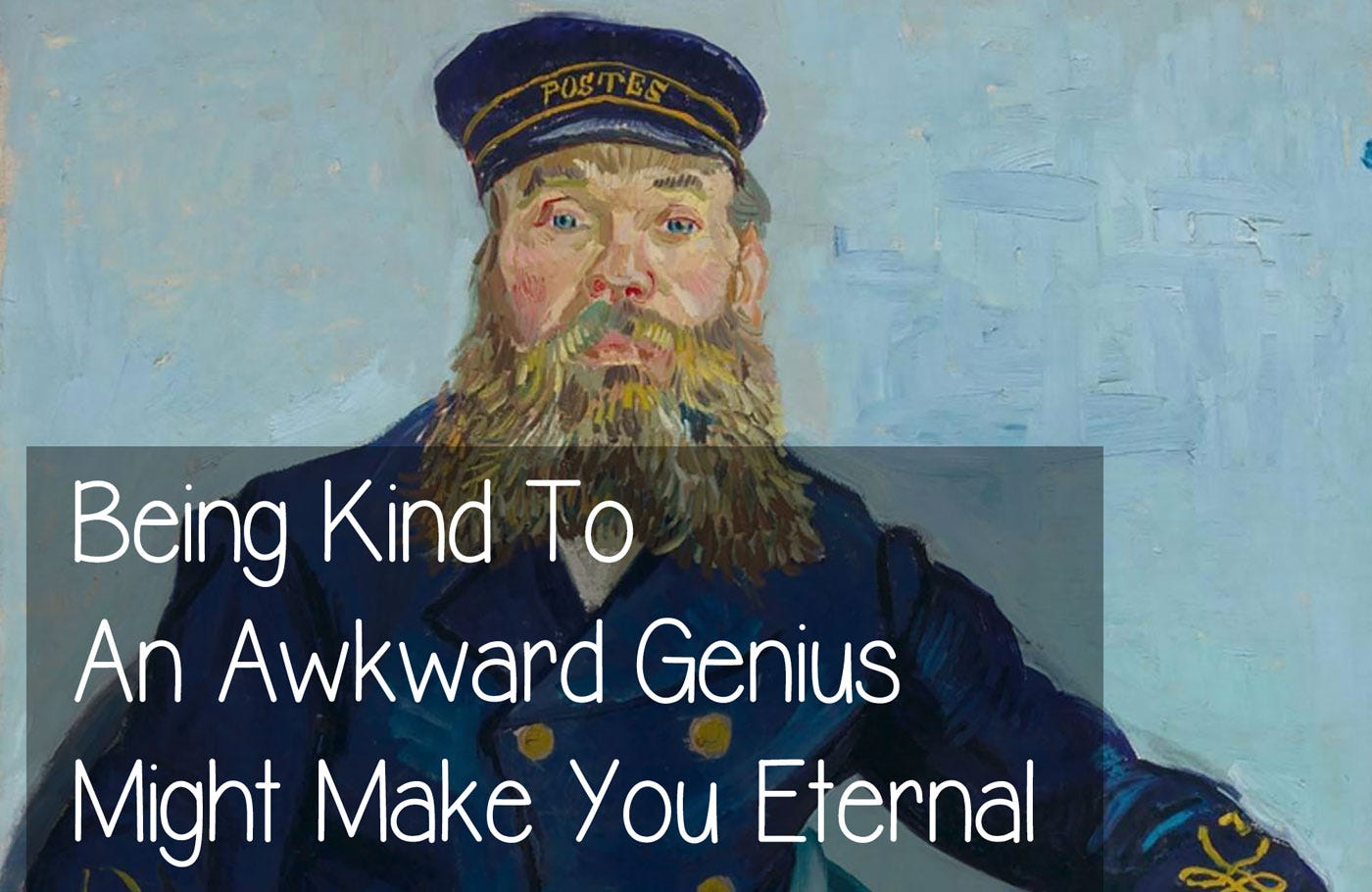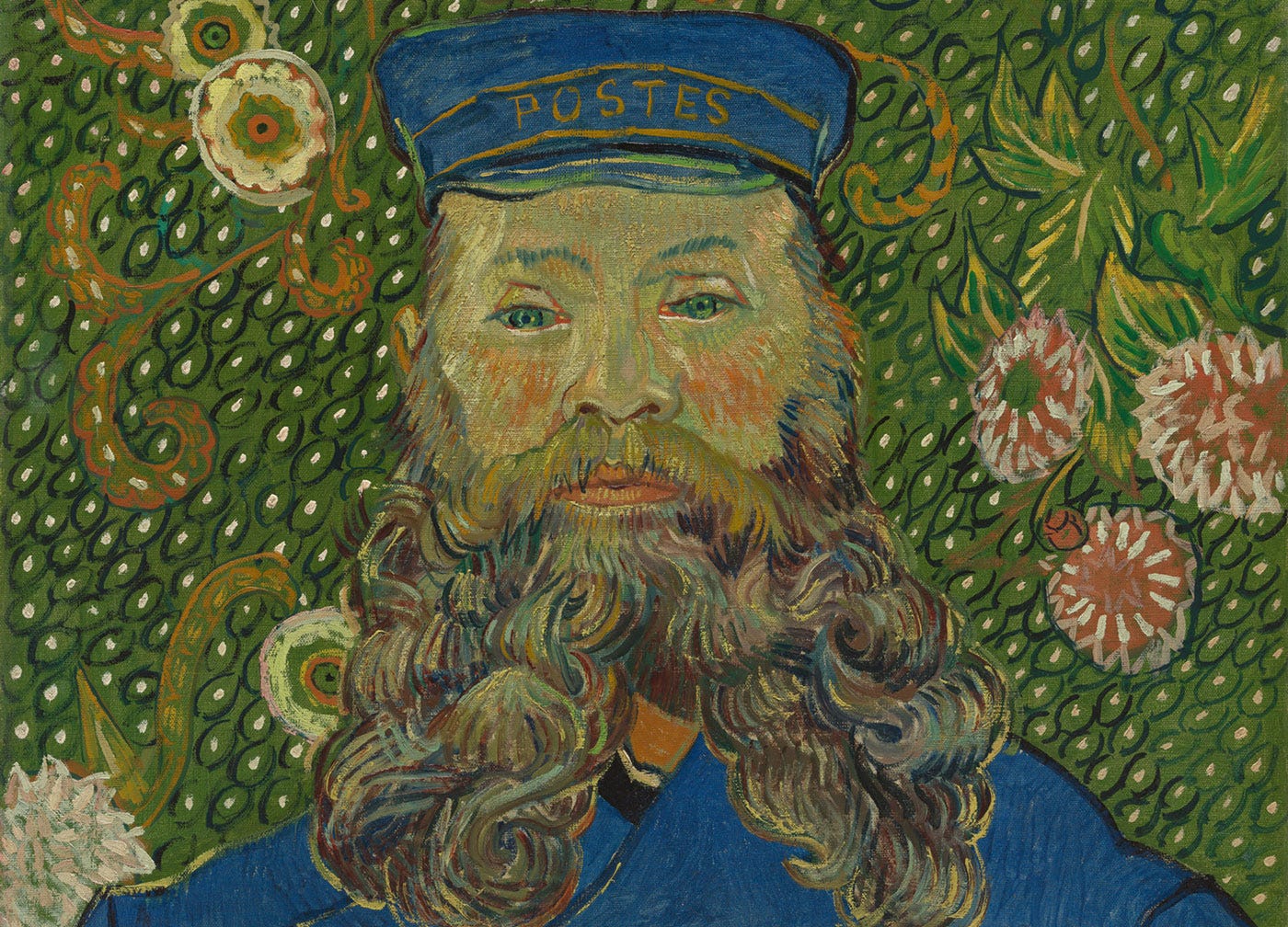Being Kind To An Awkward Genius Might Make You Eternal
Where we discover that being portrayed by Vincent van Gogh grants eternity
The myth about Van Gogh -that he never exhibited and was not recognized in his lifetime- isn't true; a future Story will delve into that.
The idea that the fact he was 'crazy' was the source of his creativity is also incorrect and will be the subject of another future Story.
Here, we discuss something simple: what it must have felt like to be a provincial French person in the 1880s.
It is likely you have never traveled outside your region. You don't speak one word of any foreign language.
Then comes a red-headed Dutchman.
On the outside, the man is awkward at times, and a bit lonely.
He is a painter but has not been to the official art school and does not paint traditional-looking things.
In those days, most people who saw paintings with intense colors and visible stripes of brushwork would think, 'it's not art, you should learn how to paint.'
Plenty of reasons to give a cold shoulder to that strange man. That is not what Joseph Roulin did.
These two drank at the same watering hole, in Arles, Provence. The curious man asks Roulin if he could pose for him. He accepts.
Vincent describes his model:
"a postman in a blue uniform with gold trimmings, a big, bearded face, very Socratic.
A more interesting man than many people".
To give a sense of Roulin's kindness, some of the people of Arles asked that Vincent be expelled from the city:
"Dear Mr. Mayor,
We the undersigned, residents of place Lamartine in the city of Arles, have the honour to inform you that for some time and on several occasions the man named Vood, a landscape painter and a Dutch subject, living in the above square, has demonstrated that he is not in full possession of his mental faculties, and that he over-indulges in drink, after which he is in a state of over-excitement such that he no longer knows what he is doing or what he is saying, and very unpredictable towards the public, a cause for fear to all the residents of the neighbourhood, and especially to women and children".
They go on asking that he be returned to his family or sent to the asylum.
But Roulin was one of the few people who saw behind the weird exterior and saw the sensitive and gentle interior. They became friends.
Vincent painted the entire family: Joseph, his wife Augustine, and their children Armand, Camille, and toddler Marcelle.
Vincent tells us:
"I’ve done the portraits of an entire family, the family of the postman whose head I did before – the man, his wife, the baby, the young boy and the 16-year-old son, all characters and very French.
You can sense how in my element that makes me feel, and that it consoles me to a certain extent for not being a doctor."
Vincent called Roulin "a staunch friend." A very caring one, who helped the artist whenever he could.
Roulin wrote to Theo, reassuring him that all was well since Vincent was "as meek as a lamb."
It sounds better in French, meaning as sweet as a lamb.
We have several letters that Roulin wrote to Vincent, saying he was "your entirely devoted friend".
A friend who did encourage Vincent to keep working:
"Do not be discouraged, work in those beautiful fields, take advantage of the models that nature provides you, with work health will return."
Joseph Roulin, opening his door to the strange Dutchman, made his family eternal.
How? Their faces and names are in museums in the United States, the Netherlands, Germany, and Brazil.
Having one's portrait on the walls of a major museum guarantees that the painting will survive time and, one hopes, eternity.
It's unlikely Joseph Roulin ever considered this when looking at Vincent on the other side of the canvas while painting his portrait.
Yet, being friendly with the awkward genius did indeed grant him eternity.
More on Vincent van Gogh:
Sources
https://vangoghletters.org/vg/documentation.html
https://vangoghletters.org/vg/letters/let652/letter.html
https://vangoghletters.org/vg/letters/let723/letter.html
https://vangoghletters.org/vg/letters/let729/letter.html
https://vangoghletters.org/vg/letters/let773/letter.html
https://vangoghletters.org/vg/letters/let775/letter.html
https://vangoghletters.org/vg/letters/let796/letter.html







